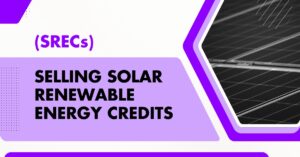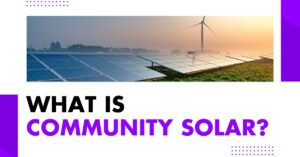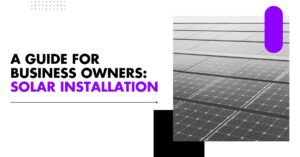What You Need to Know About the ITC, Domestic Content, and Energy Community Bonuses

What You Need to Know About the ITC, Domestic Content, and Energy Community Bonuses
If you own a business, you’re likely always looking for new ways to do what’s best for your business, its bottom line, and, ideally, the environment.
If so, you’ll want to take the time to consider investing in renewable energy projects. And you’ll definitely want to familiarize yourself with the Investment Tax Credit, plus its added incentives, like the Domestic Content Bonus and the Energy Community Bonus.
These programs reward you for reducing your carbon footprint while also giving you a real opportunity to maximize your financial savings.
Here’s how you can take full advantage of them:
What is the Investment Tax Credit?
SThe Investment Tax Credit (ITC) was first enacted in 1978 and has been extended and renewed several times in various manifestations. The original goal of the credit was to protect American businesses from foreign competition. Over time, the credit has been deployed in a variety of areas, including energy conservation, green technology, reforestation, and others.
Today, the credit exists as a federal tax incentive designed to promote renewable energy adoption, along with many of the other initiatives described above.
The ITC serves as a significant financial boost for businesses that invest in renewable projects, including solar installations, energy storage systems, heat pumps, wind energy, and other eligible technologies. It reduces the upfront cost of these projects, making clean energy more affordable and attractive for businesses than ever before.
Currently, the ITC covers 30% of eligible project expenses. This sounds straightforward, but it gets complicated because the percentage can vary depending on specific project qualifications, timelines, or other factors.
Some businesses can even stack additional incentives, like the Domestic Content and Energy Community Bonuses, to bring their total credits up to as much as 40 or 50%.
Can I Retroactively Apply for ITC or Bonuses on Existing Projects?
The short answer is…it depends. The ITC and its bonus incentives only apply to projects initiated during the programs’ active period, specifically those that meet qualifying criteria at the time of implementation.
In other words, you are entitled to the credit if you placed the qualified property into service during that specific tax year.
The exception is for farmers. Eligible farmers can qualify to claim 20% of the investment credit base placed in service on or after April 1, 2022.
Taken together, these incentives all aim to accelerate the nation’s transition away from fossil fuels while giving businesses concrete financial reasons to help make it happen.
Domestic Content Bonus Credit: Explained
The Domestic Content Bonus Credit adds a patriotic twist to ITC benefits by further rewarding businesses that prioritize materials made in the United States. Projects must use specific percentages of American-made products, like steel or solar panel components, in order to qualify.
By meeting these criteria, businesses receive an additional 10% on top of the existing base ITC rate. This incentive gives organizations a chance to support local industries while further lowering costs.
However, meeting domestic content requirements can get tricky, which is why working with experts like our team at IE Construction can make such a huge difference.
We specialize in sourcing eligible materials and providing guidance to make sure your project qualifies for the Domestic Content Bonus Credit or any other incentives that might be on the table.
How Do You Know if Your Project Qualifies for the Domestic Content Bonus Credit?
Again, there are specific criteria that must be met in order to qualify for the Domestic Content Bonus Credit. You can’t just claim it on an assumption.
At the core of qualification is the 40% rule. 40% of all the manufactured products or materials must be deemed “domestic,” in other words, produced in the United States. For offshore projects, however, the threshold is slightly lower at 20%. Make sure to check the specifics of your project type to confirm which threshold applies.
It’s also important to note that not everything labeled “made in the USA” will automatically qualify. Typically, the qualifying list includes items like steel, iron, and manufactured materials that go into constructing your project. You’ll want to work closely with your suppliers and vendors to get documentation on the origins of key components.
Understanding the Energy Community Bonus
The Energy Community Bonus is designed to incentivize development in areas with economic conditions tied to fossil fuel reliance. These energy communities are designated based on specific criteria, such as:
- Areas with high unemployment rates related to the closure of coal, oil, or gas facilities.
- Communities where coal mines and power plants once played a critical economic role.
- Regions with significant employment or tax involvement in fossil fuel industries.
If your project meets the Energy Community qualifications, you can unlock an additional 10% ITC bonus.
The benefits, of course, don’t stop at financial savings—investing in these areas can have a ripple effect, creating local jobs, stimulating the economy, and improving community well-being. It’s a win-win that benefits both your business and the surrounding community. Not to mention the great PR!
What’s the Timeline for the Energy Community Bonus Credit?
Both the Domestic Content and Energy Community Bonuses follow specific timelines and qualifying windows.
Missing these deadlines would mean leaving cash on the table, so you’ll want to work closely with a tax professional to make sure your project’s timeline is aligned with that of any active incentives. Some bonuses may also be tied to phased reductions, so acting sooner tends to be better than later.
Maximizing Tax Incentives for Renewable Energy Projects
Understanding the ITC is one thing, but making it work for your business? That requires strategy.
Whether you’re a renewable energy investor or a business owner, here’s how you boost your tax savings:
1. Partner with Experts
Don’t go it alone! Rather than trying to decipher the complexities of tax law, you may want to choose to work with experienced renewable energy providers like our team at IE Construction instead. We know the ins and outs of domestic sourcing requirements, ITC guidelines, and Energy Community qualifications.
Similarly, knowing the tax code or incentive deadlines inside and out is no small task, so you may want to collaborate with a tax professional to make sure you’re maximizing all credits that might be available to you.
2. Conduct Your Site Analysis Early
Don’t waste time in determining if your project’s location meets Energy Community criteria. A detailed site analysis can uncover potential bonuses you may not have considered.
3. Leverage Depreciation Benefits
Beyond tax credits, don’t forget about another incentive that might be sitting right in front of you: depreciation.
The Modified Accelerated Cost Recovery System (MACRS) allows businesses to recover their investments even faster by accelerating deductions for renewable energy equipment over a shorter period of time. Layering depreciation incentives with tax credits turbocharges your savings.
Ask yourself this—which parts of your project qualify for MACRS, and are you integrating it into your tax strategy today? Engaging a tax advisor who specializes in energy initiatives could be helpful here.
4. Stay Up-to-Date on Policy Adjustments
Tax policies change annually, and sometimes even faster. Staying updated on any amendments to renewable energy incentives is a non-negotiable.
Variations in bonus credit percentages or new qualifying conditions, for instance, could dramatically impact how much you can claim. To avoid being caught off guard, sign up for newsletters from renewable energy organizations, follow government updates, or connect with renewable energy consultants who can help keep you informed.
5. Track and Present Your Sustainability Impact
While tax savings might be your primary goal, don’t overlook the PR and brand value of renewable energy adoption. Share your efforts with customers, investors, and stakeholders.
Highlight the environmental impact your project is making, like reduced carbon emissions or community job creation.
This isn’t just about telling your story—it’s about building trust, which can lead to long-term business success.
How IE Construction Can Support Your Renewable Energy Goals
At IE Construction, we specialize in renewable energy projects and bring our expertise to every stage, from material sourcing to documentation compliance. We’ll make sure your project integrates eligible U.S.-manufactured materials seamlessly and have a track record of successfully delivering projects in qualifying Energy Community areas.
Here, our motto is, “Better for your budget, better for your bottom line, better for you.” We want to help your business thrive. When you partner with us, you won’t just be checking off tax boxes, but instead, will set yourself up for long-term success.
The opportunities of the ITC and its additional bonuses exist to cut costs, reduce carbon footprints, and make a meaningful impact in the communities that need it most.
But making the most of these incentives? That requires the right knowledge and the right partners.
Whether you’re planning a new renewable energy project or just starting to learn about your options, remember that experts like IE Construction are here to guide you every step of the way. Don’t leave money—or potential—on the table. Contact IE Construction today and start maximizing your savings.




